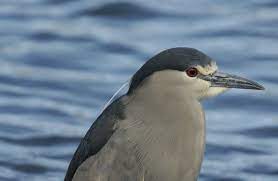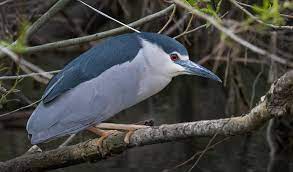The Black-Crowned Night Heron, scientifically known as Nycticorax nycticorax, is a captivating wading bird that inhabits a variety of wetland habitats across the globe. With its distinctive appearance and unique behaviors, this bird has intrigued birdwatchers and naturalists alike. Join us as we delve into 20 intriguing facts about the enigmatic Black-Crowned Night Heron, shedding light on its habitat, behaviors, and role in the ecosystem.

1. Nocturnal Habits: As its name suggests, the Black-Crowned Night Heron is primarily active during the night, showcasing remarkable adaptions for nocturnal hunting.
2. Camouflaged Plumage: Their black-crowned heads and mottled gray plumage provide effective camouflage amid their wetland environments.
3. Versatile Diet: These herons are opportunistic feeders, indulging in a varied diet of fish, insects, crustaceans, and even small mammals.
4. Global Distribution: The species boasts a wide distribution, found on every continent except Antarctica, showcasing its adaptability.
5. Urban Dwellers: Black-Crowned Night Herons are known to inhabit urban and suburban areas, nesting in trees near human settlements.
6. Courtship Rituals: Intricate displays, including bill-clattering and stretching, are part of their courtship rituals during the breeding season.
7. Colonial Nesters: They often nest in colonies, showcasing social behaviors and cooperative breeding efforts.
8. Hidden Nests: Their nests are often constructed in dense vegetation or trees, providing protection for their young.
9. Seasonal Movements: Some populations undertake seasonal migrations, traveling thousands of miles to reach their breeding or wintering grounds.
10. Wetland Stewards: By consuming pests like insects and small rodents, Black-Crowned Night Herons contribute to the health of wetland ecosystems.
11. Captivating Vocalizations: Their calls, which include croaks and squawks, are distinctive and add to the ambiance of wetland environments.
12. Longevity: With proper conditions, these herons can live for several decades, with documented lifespans of up to 25 years.
13. Cultural Symbolism: In various cultures, Black-Crowned Night Herons have been associated with night, mystery, and introspection.
14. Wildlife Conservancy: Efforts to protect and restore wetland habitats benefit the survival of these herons and other wetland-dependent species.
15. Feather Coloration: Males and females share similar plumage, with only slight differences in coloration and size.
16. Ecological Indicators: Their presence or absence in wetlands can reflect the health of these critical ecosystems.
17. Artistic Inspiration: The beauty and behaviors of Black-Crowned Night Herons have inspired artists, writers, and photographers.
18. Flight Patterns: These herons fly with their necks folded, exhibiting slow and steady wingbeats during both day and night.
19. Resting Postures: During the daytime, Black-Crowned Night Herons often rest in a hunched posture, blending into their surroundings.
20. Conservation Concerns: Habitat loss and pollution pose threats to their populations, underscoring the need for conservation efforts.



















Add Comment